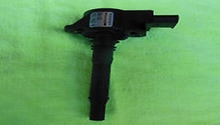Mercedes-Benz C-Class: Why is My Engine Getting Carbon Buildup?
Carbon buildup is commonly found in engines with high mileage. It creates restrictions in the fuel and intake system, which lowers your fuel economy and makes your engine work harder than it should. A little maintenance will help restore it to like-new performance.
This article applies to the Mercedes-Benz C-Class w204 (2007-2014).
Carbon deposits are most commonly found on the intake valves, spark plugs, throttle body, and piston rings. Finding carbon deposits in your engine can point to a number of problems that range from poor quality fuel to an incorrect air/fuel ratio. When carbon builds up on the intake valves, the result can be a loss of compression and misfires. Fortunately, manufactures have recognized the problem and created additives to add to your fuel as well as oil that flushes carbon from these components.

Materials Needed
- Basic set of hand tools (screwdrivers, sockets, ratchets, pliers)
- Spark plug socket
- 3" and 6 3/8" extension
- E8 socket
- Torx socket set
- Throttle body cleaner
- MAF sensor cleaner
- Sea Foam
- Chevron Techron
- Anti-sieze
- Rags
Carbon buildup is usually a result of poor vehicle maintenance. If these have not been performed on your vehicle recently, try them first:
- Oil and oil filter change
- Air filter replacement
- Add fresh gasoline
Be sure your OBD-II system does not contain any stored powertrain codes. These may be contributing to an incorrect air/fuel ratio, and causing carbon buildup.
Step 1 – Add Sea Foam or Chevron Techron to the vehicle
Sea Foam is a petroleum based liquid, making it safe to use in your fuel system and oiling system. As you drive your vehicle, it removes carbon deposits from the engine.
Sea Foam has instructions on the bottle, which will give you the appropriate amounts of Sea Foam to use for each system. As a general rule, do not run the vehicle longer than 100 miles with Sea Foam in the oiling system (Sea Foam is not a lubricant or oil). Adding it near an oil change is advised.
Chevron Techron is a fuel system cleaner approved by Mercedes-Benz. It pours directly into the gas tank, and cleans your injectors as well as intake valves.
Adding Sea Foam/Techron to the oiling and fuel system is self explanatory. The instructions will list the recommended amounts to use.
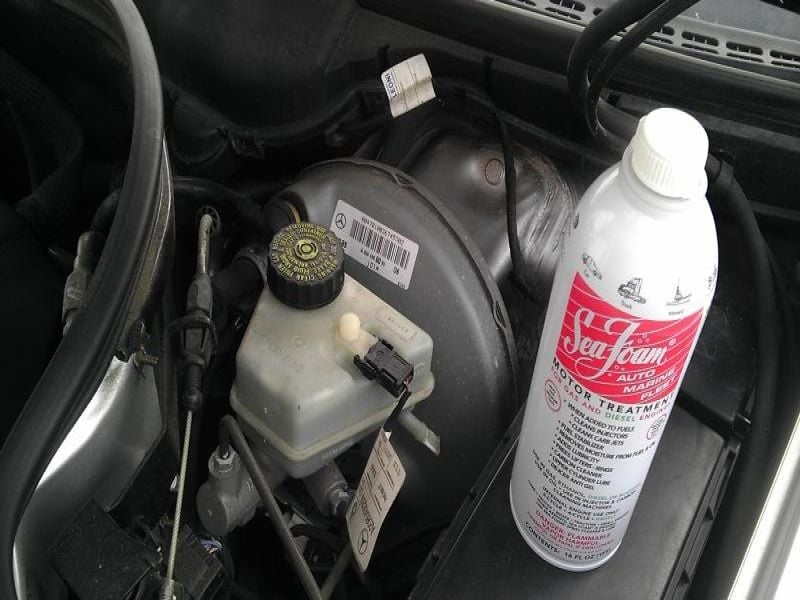
Step 2 – Clean your MAF/throttle body
Carbon buildup on both of these components will result in reduced engine performance, and possible check engine lights. Cleaners are specifically made that can be sprayed into the component, usually restoring it to like-new performance.
The C-Class w204 comes with two different engines depending on your model. The first is the M271 (4-cylinder turbo). The second is the M272 (v-shaped, 6-cylinder). The first set of instructions applies to the M272.
First, remove the engine cover. It is a two-piece design. Remove the front cover first. Grab both sides of the cover, and pull upwards to pop the cover free from the engine.

Cleaning your throttle body does not require much work once the MAF has been removed on the M272.
- Continue to remove the MAF sensor by disconnecting the clips holding the intake pipe to the MAF sensor housing and throttle body. There may also be a hose attached to this pipe, but it does not need to be removed if you do not want to remove the intake pipe from the engine bay.
- Once removed, you can manually open the throttle plate with your hand by pushing on it. Use the throttle body cleaner and a rag to clean any dark residue.
To clean the throttle body on the M271, you will need to loosen the hose clamp (blue square in Figure 6), and pull the hose off of the throttle body (green arrow in Figure 6).
To access the MAF sensor, remove the air box lid. It is held in place by six Torx screws. Once it's lifted out of the way, you will see the MAF sensor at the rear of the air box. Spray the MAF cleaner directly onto the sensor.

Figure 3. Removing the intake elbow attached to the throttle body (M272). 
Figure 4. The throttle body (M272). 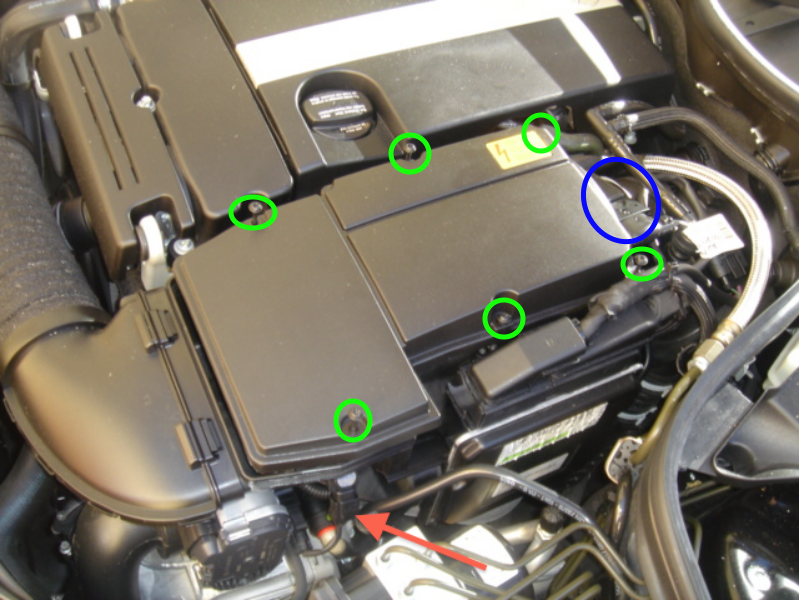
Figure 5. Removing the air lid on the M271. The MAF sensor is indicated by the blue circle. 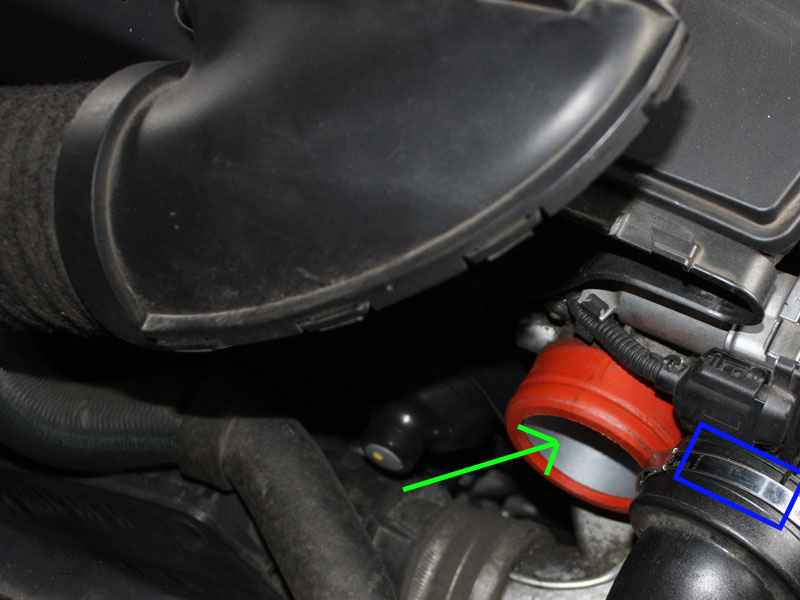
Figure 6. Removing the intake hose (M271).
Related Article and Discussion
- How to Clean Your MAF Sensor and Throttle Body - MBWorld.org
- M271 MAF Replacement - MBWorld.org
Step 3 – Remove the spark plugs
An incorrect air/fuel ratio or lack of maintenance can cause your spark plugs to become fouled with carbon. When this happens, it becomes harder for the spark to occur, causing reduced fuel economy and even misfires.
For the M272 V6 engine, refer to How to Replace Spark Plugs.
For the M271 four cylinder engine, remove the spark plugs by following this procedure:
- Remove the engine cover.
The M271 cover is one-piece. It is simply pulled straight up and off the engine.
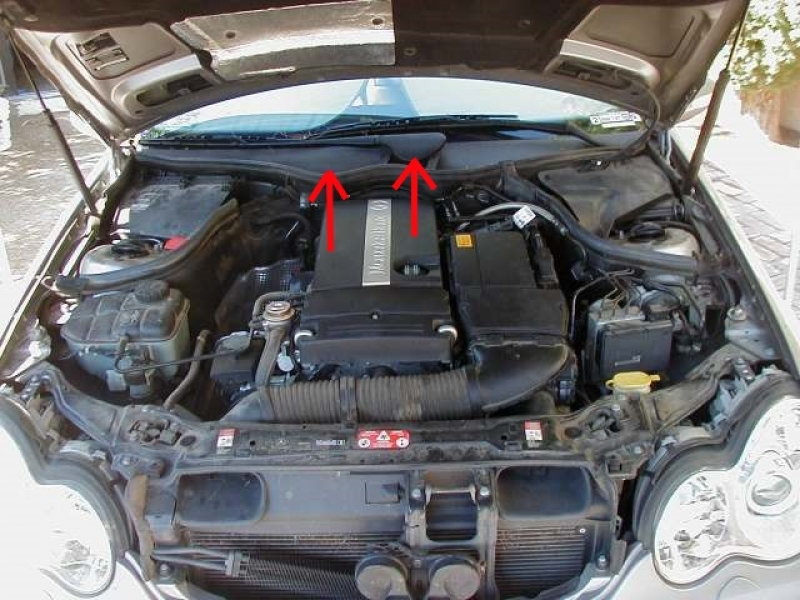
- This will then expose the coil packs.
- Remove the coil packs. Each one is held in place by two E8 bolts.
- Also, remove the wiring connectors on the coil packs. Do so by squeezing the sides of the connector while pulling.
Pull upwards on the coil packs and they will pop free from the valve cover. A little twisting while pulling will help with the removal.
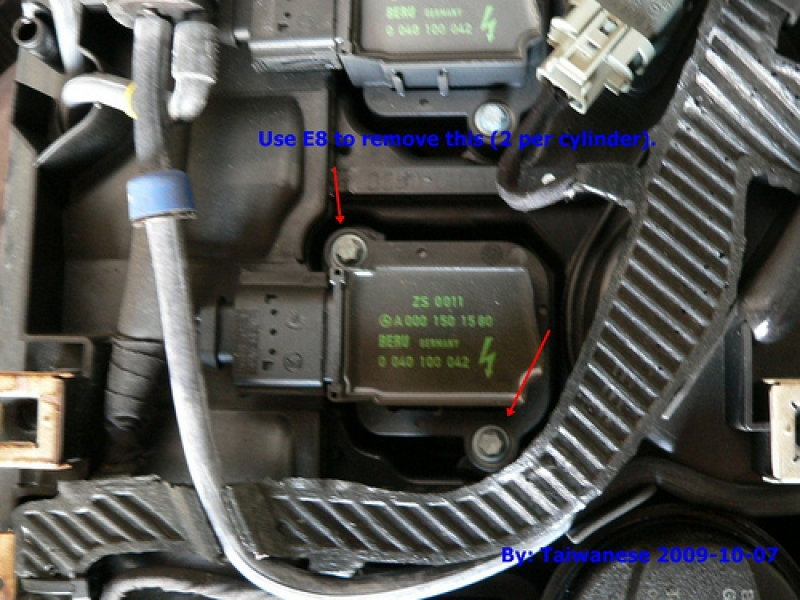
Figure 8. The M271 coil pack. 
Figure 9. The connector has been removed from the coil pack.
Using your spark plug socket, push the rubber grommet inside the socket onto the spark plug. Loosen the plug by turning it counterclockwise until the spark plug can be lifted up and out of the tube.
Now that your spark plugs are removed, you can visually analyze their condition. This can lead you to a number of conclusions such as:
- A rich or lean air fuel ratio (dark black spark plug tip if rich, white tip if lean)
- Oil burning (blue-ish tip)
- Carbon deposits (dark black; the tip may have a rough look and feeling)
- Normal wear ( brown tip and a worn electrode)
If you decide to change the spark plugs, be sure to use one of these part numbers: NGK: LFR6AIX-11 or Bosch: FR-6-MPP-332.
Related Discussions
- M271 Spark Plug DIY - MBWorld.org
- Spark Plug How-to - MBWorld.org
- Direct-Injection Engines - Excessive Carbon - MBWorld.org
- Carbon Buildup - MBWorld.org




